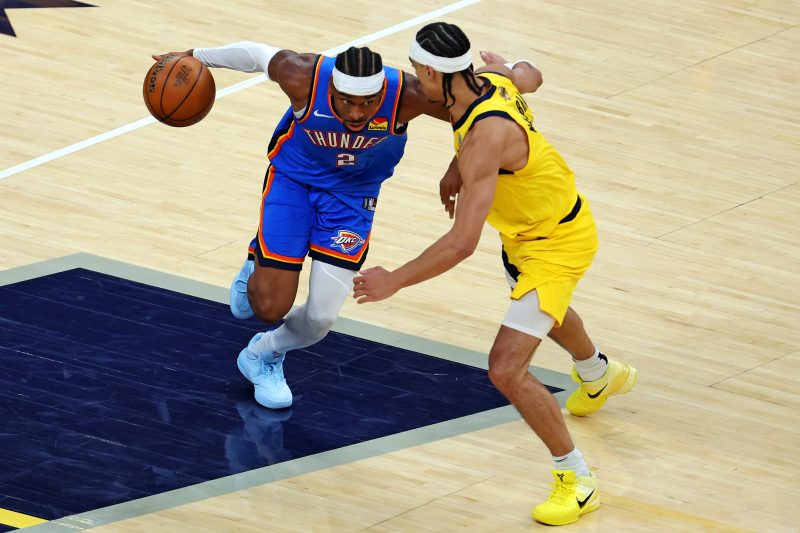
These NBA Finals are confusing.
Entering Game 3, the Pacers had led for only one minute and 53.3 seconds, with their time ahead in their lone victory spanning just 0.3 seconds. The Thunder had their star player, NBA Most Valuable Player Shai Gilgeous-Alexander, set the record for most points scored by a player through two games (72) in his NBA Finals debut.
Yet, with their 116-107 victory Wednesday, June 11, the Pacers took a 2-1 lead over Oklahoma City and now sit two victories from their first NBA Finals title in franchise history.
Things could be very different. The Thunder were the best team in the NBA regular season (68-14) and appear to have the deeper team. But, in many ways, these NBA Finals are a case study of what happens in a clash of teams that — when they play to their strengths and style — are very tough to beat.
The question becomes: how does one get the other to play out of sorts?
A lot of it has come down to effort.
“I just thought they really outplayed us on both ends,” Thunder coach Mark Daigneault said Wednesday after the game. “I thought they were in character in terms of their physicality, their pressure on defense. Then they were in character in terms of their pace on offense.
“They just stacked way more quality possessions in the fourth quarter than we did.”
That’s the essence: at this stage in the NBA postseason, with elite teams vying for championships, merely staying in character can mark the difference between winning and losing.
For the Pacers, the key appears to lie in speed and protecting the ball. Because when Indiana does that, it puts up more shots. And as the top shooting team this postseason (49.5%), more shots means more points. More points for this team also signifies fewer transition opportunities for Oklahoma City.
After committing six turnovers Wednesday in the first quarter, the Pacers committed just a single one in the second. Indiana, unsurprisingly, outscored Oklahoma City by 12 in the period. This was the run that set the tone for the rest of the game.
When the Pacers turning the ball over, they play right into Oklahoma City’s preferred style. Because the Thunder are at their best when they are physical and handsy on defense, deflecting passes and clogging the paint.
And when the Thunder force teams into turnovers, they can ignite on explosive and overwhelming runs that can put games away.
But when they don’t force turnovers, they can become too reliant on Gilgeous-Alexander to lift the team.
“They were aggressive,” Gilgeous-Alexander said after the game. “I’m not sure how many points they had, but it felt like when they scored, we were going against a set defense, and it’s always harder against a set defense.”
Perhaps surprising some, the Pacers have been the aggressor on defense so far. As they have all postseason, relying on their youth, conditioning and athleticism, the Pacers have picked up the opposing team’s best player — Gilgeous-Alexander — full court, gradually wearing him down.
This has also slowed Oklahoma City’s offensive operation, forcing them to work in the halfcourt, which has been exposed this series as something of a weakness.
In the fourth quarter Wednesday, a weary Gilgeous-Alexander put up just three shot attempts and did not record a single assist.
Game 4 on Friday, June 13 (8 p.m. ET, ABC) becomes pivotal. The Thunder are still favored to even the series, but a 3-1 Indiana lead could become insurmountable. Can either team rely on its character to win the series?
It has felt, at times, like the difference has been levels of aggression and intention.
“When you execute the right way, whether it’s two years ago in some game that doesn’t seem very meaningful in mid-January or in Game 3 of the Finals, these guys see where important things are important, and hard things are hard,” Pacers coach Rick Carlisle said.
“That’s a phrase I’ve used many times, hard things are hard. But our guys, they have made the investment, and it’s an ongoing thing. It’s like a great marriage; it’s a lot of work.”
